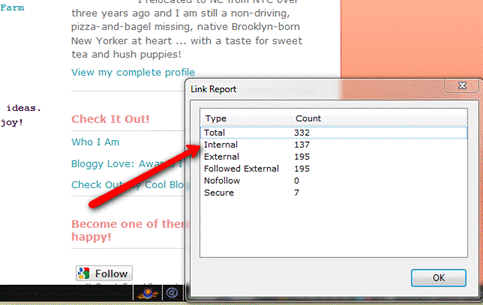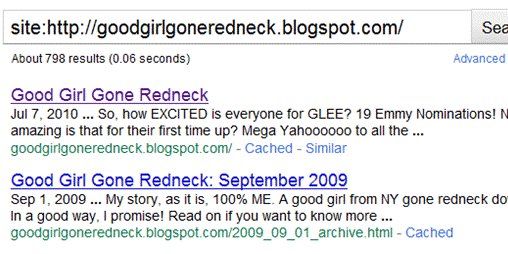Unfortunately, links fall off the link graph. Google loves freshness, and as such, it is in their best interest to eventually stop indexing pages and shifting a page that still exists from one that does pass value, to one that doesn’t.
As SEOs and webmasters, people who desire to have links that will continuously pass value to our pages, it’s in our best interest to get links that will pass value for a long period of time, not just for a few blips in the long timeline that will be the existence of the internet.
For pages that are static (most normally non-blogs), we only have to maintain control of the domain, occasionally update or make sure the person who does maintains the link to ensure that the value will persist. However, for those pages that are constantly changing, most often blogs, it is in our best interest to assess the future value of the links we may get from these pages.
How do we do this? The “site:” search command.
Blog Authority Assessment
When looking at a blog, take a frontline look at its architecture. How many posts seem likely to have been written since its inception? Is there an archive to help inform how old the domain is? How frequently does the blogger seem to be posting?
Create an approximation in your mind of what you might imagine what number of pages the site actually has. Sometimes, you’ll actually get a frontpage listing of the total posts the blogger has made.
Next, download Search Status and use the link report function to get the number of internal links on the page. If the number is 182, it’s a fair assumption that Google should, as a default, have somewhere around 182 pages indexed for a fairly reasonable domain.

Note this number – you’ll use it to compare against the domain’s “site:” results.
Then, go to Google and insert “site:http://www.URL.com”. In this example, I pulled a random mommy blogger, “Good Girl Gone Redneck”.

Good Girl Gone Redneck has a PR3, with 137 internal links on the homepage. So, compared against the “site:URL” results, it seems to have a good page indexation time. We can actually see from her archives that 389 pages have been posts that have been released. So, if we compare and contrast these two numbers, it’s safe to assume that this link will hang around for a long time, the site is indexed well, and more importantly, Google sees this blog as one of value. So, worth getting a link on!
This isn’t always the case, though. You’ll often times see blogs that are PR4 or better with a lot of posts, but when you check the “site:” function, they only have 300 or so pages indexed. This is a sign that there is a detachment from the believed PR value and the actual value of the site, and more importantly, the value of the page where your link will eventually sit.
If you get a link on a blog of this type, it is very likely that your post will quickly fall off the link graph. If you are of the belief that indexation depth is in close relation to domain strength (as I am), you can also use this valuation technique to assess the domain and page strength, even if your link is going on a static URL.
Better than PageRank
This technique is always an approximation, but often times, it offers a rather strong arrow towards properly assessing domain valuation, past the mythological PageRank number. Yahoo! Site Explorer’s backlinks is a decent gauge, but it’s not what Google uses – it’s what Yahoo does.
In my opinion, the “site:” command, used appropriately, is the best way to properly assess the current domain strength of a middle-level site (PR2-PR4) on Google.





